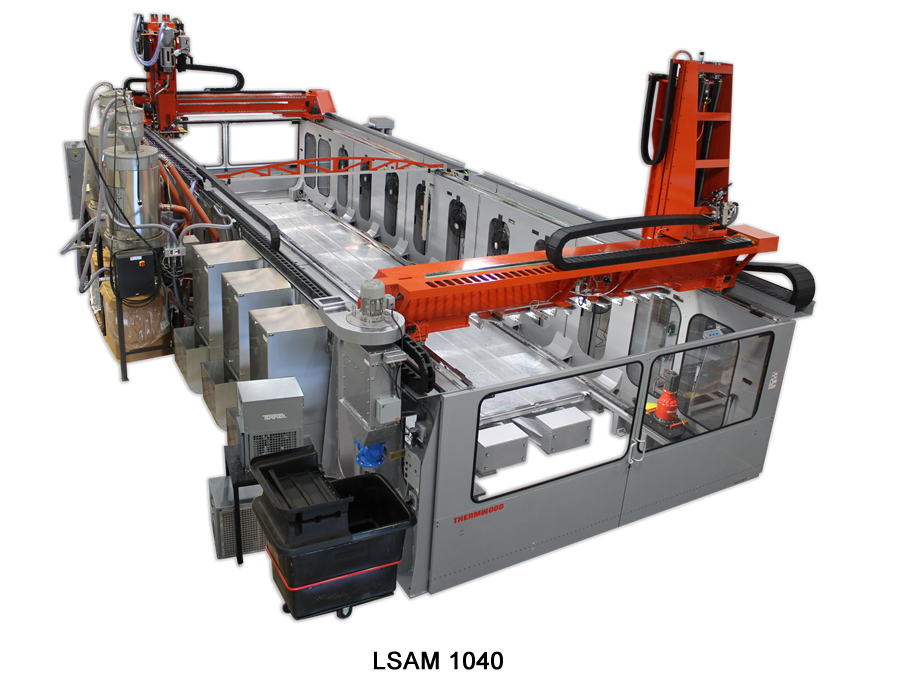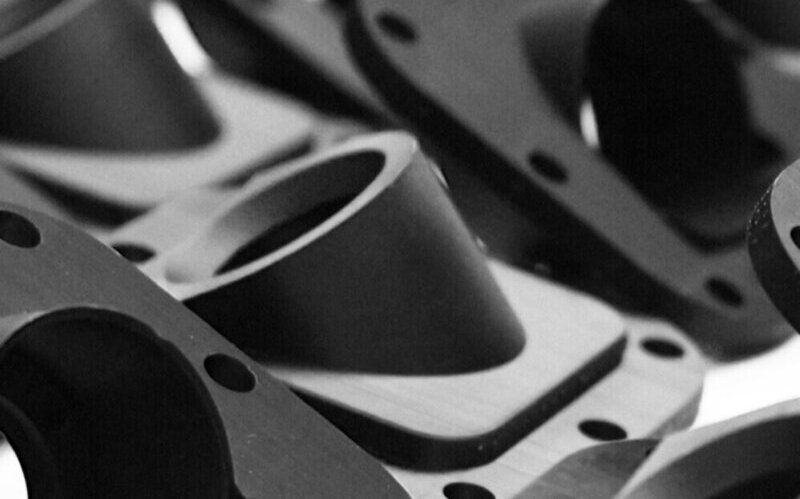Inspired in part by the acquisition of EnvisionTEC by Desktop Metal and of Origin by Stratasys, we’ve been brainstorming about the newly hot 3D printing stocks and renewed interest from investors in our markets. Is 2021 going to be a SPACtacular year for us?
In part one of this series, we speculated on some Merger and Acquisitions activity that we’d like to see in 2021. Here, we continue to think creatively about what kinds of options there are out there. See this as a fanciful look at just some of the possibilities.
1. Midea Group Buys Thermwood

Midea Group (Shenzen) is a giant Chinese technology company that makes HVAC systems, home appliances like vacuum cleaners, motion control devices such as stepper motors, and owns Kuka. Kuka itself is one of the largest industrial robot companies worldwide.
Thermwood is a $51 million-revenue U.S. firm that makes large routers and CNC systems. They also offer their own large-scale 3D printing technology, LSAM. Midea motion control could power Thermwood and, amid the huge CNC systems companies the likes of DMG and Haas, Thermwood’s large-scale niche is tempting and wouldn’t immediately put them up against the CNC giants. It would, however, let them sell these large-format CNC machines to the aerospace and industrial markets. Simultaneously, it would let the firm leverage its heating and cooling expertise to improve Thermwood’s polymer processing and therefore its large-scale 3D printing capability.
Thermwood, with Midea’s funding, could expand to make formwork, large-scale polymer car and marine parts, as well as molds for aviation. These are all high-value applications and high-value markets. At the same time, if we then couple Thermwood’s large-scale motion stages with Midea motion control and Kuka robotics, we can make even larger polymer and concrete 3D printers. This would be a very interesting market for Midea to join because this means that they could print formwork for homes, print homes, print polymer parts for homes, and install their HVAC, add home electronics, add appliances and then they could make almost entire houses.
2. BASF Buys Fast Radius

Fast Radius has taken over $61 million in funding, which is a lot, but around only half of what Xometry has taken in. At the same time, with GKN and others moving into the polymer space, it doesn’t look like a happy island with a few competitors anymore. Instead, one metal and polymer service could compete with a service that only offers polymer production and out-offer them on service, easily besting them in revenue. Maybe now would make for a good time for an exit? BASF so far has bought Sculpteo and invested in Materialise, showing an appetite for service businesses. Could they dream of a U.S. expansion, coupled with a partnership with Fast Radius-investor UPS, tempting them to buy the U.S.-based service?
3. Oerlikon Buys Sintavia

Sintavia’s M400-4 has four lasers working together to complete builds up to 400 x 400 x 400 mm
Oerlikon makes aerospace parts, surfacing solutions, polymers, metals and has a 3D printing service arm that makes its own metal 3D printing powder. Large investments in 3D printing make the group poised to take a leading role in aerospace parts production worldwide.
Sintavia, meanwhile, has taken on Sumitomo investment to expand significantly its metal printing capacity in the U.S. An ISO certification fervor and competence in metals has endeared the company to the military and commercial space community. Outright ownership of overseas defense-related industries is sensitive, but surely if anyone, the Swiss?
The investments that need to be made in this area to survive and thrive will be considerable for any independent player, but the opportunity will be there. Both aviation majors, the aero engine companies, and also the commercial space firms understand that they need a healthy ecosystem of Tier 1 suppliers in order to thrive and de-risk production themselves. 3D printing is going to rapidly expand and there will need to be several strong players available to service this growing market, making anything from satellite components to propulsion parts.
4. Bosch Buys Ultimaker

Automotive tooling made on an Ultimaker
As a firm, Bosch has a number of 3D printing patents. It also uses the technology widely and has extensively tested Ultimakers, using them in house. The firm also sells re-branded Flashforges under its Dremel brand, so its no stranger to directly selling these tools, and tools in general, to businesses.
At the same time the company could use the technology extensively in batteries and polymer parts, as well as in automobile mass customization. Through its Bosch Rexroth division, it is also a leader in precision motion control, it has an industry 4.0 unit, and a lot of air flow control solutions that would help it excel in 3D printing. Ultimaker seems like it wouldn’t like to be sold at the moment, but a comfortable ownership by a German engineering group would seem to be better than taking the VC path. If Bosch can validate 3D printers for manufacturing in-house and use it to expand its business lines, then making and selling these systems themselves would make a lot of sense. At the same time, with Industry 4.0, automobile, flow and motion control units, it could contribute to each and every system and leverage its considerable expertise.
Subscribe to Our Email Newsletter
Stay up-to-date on all the latest news from the 3D printing industry and receive information and offers from third party vendors.
You May Also Like
Gorilla Sports GE’s First 3D Printed Titanium Cast
How do you help a gorilla with a broken arm? Sounds like the start of a bad joke a zookeeper might tell, but it’s an actual dilemma recently faced by...
Nylon 3D Printed Parts Made More Functional with Coatings & Colors
Parts 3D printed from polyamide (PA, Nylon) 12 using powder bed fusion (PBF) are a mainstay in the additive manufacturing (AM) industry. While post-finishing processes have improved the porosity of...
$25M to Back Sintavia’s Largest Expansion of Metal 3D Printing Capacity Since 2019
Sintavia, the digital manufacturing company specializing in mission-critical parts for strategic sectors, announced a $25 million investment to increase its production capacity, the largest expansion to its operations since 2019....
Velo3D Initiates Public Offering in a Bid to Strengthen Financial Foundations and Drive Future Growth
Velo3D (NYSE: VLD) has been among a number of publicly traded 3D printing firms that have attempted to weather the current macroeconomic climate. After posting a challenging financial report for 2023,...































